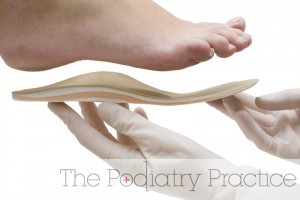Soft vs hard orthotics? What do I need?
Often when we see patients who have been to other practitioners for orthotics in the past, we are compelled to answer questions about the relative merits of different types of orthotics, and the materials they are made from.
The first, and most important aspect to remember, is that if orthotics have been recommended to you for treating a foot or leg condition, then it is the design and function of the device which will provide the outcome which is desired. For some people, a firm or rigid device may be appropriate, for others a much softer and more flexible orthotic is necessary. There is no ‘one size fits all‘ approach that will suit everyone.
The use of orthotics as a biomechanical treatment method has a long history in podiatry, orthopaedics and medicine. In simple terms, orthotics are used to alter forces and stresses on injured tissues in order to heal or prevent recurrence of injury. In some instances they are intended to actually change the physical look of the posture of the foot and leg, in other circumstances they are designed to alter the loads and forces within the foot and leg without appreciably changing the appearance of standing and walking.
At The Podiatry Practice, we have had many years of experience in using a variety of different approaches to the prescription and manufacture of different orthotic styles. In years gone by, it was common to take a plaster cast of the foot – which was then sent to an orthotic laboratory with a written prescription, in order to be manufactured by hand into the desired device. In recent years, technology has produced sophisticated systems, such as our Orthema equipment, which allows us to take the human-error aspect of orthotic manufacturing to very low levels.
With this technology, we can now take a scan of the morphology and shape of each foot, then use this data to develop a custom orthotic design which best meets the treatment goals for your problem. Once we are satisfied with the design, our milling equipment allows us to select an appropriate material (from very hard and firm, through to extremely soft and flexible) with which to produce the orthotic. Instead of waiting up to two weeks for a finished device, we can – if urgently required – produce a pair of custom orthotics within an hour.
However, the most important issue we emphasise to all of our patients is that orthotics must be comfortable, and easy to use. They should, when designed and fitted correctly, feel like they are just part of the shoe – and barely noticeable. The biggest obstacle to achieving this is always down to selecting the right kind of footwear to match the needs of your problem, and the goals of treatment. This is where our podiatrists will spend considerable time advising you on what shoes are best suited to your needs.
Author: Anthony Short







